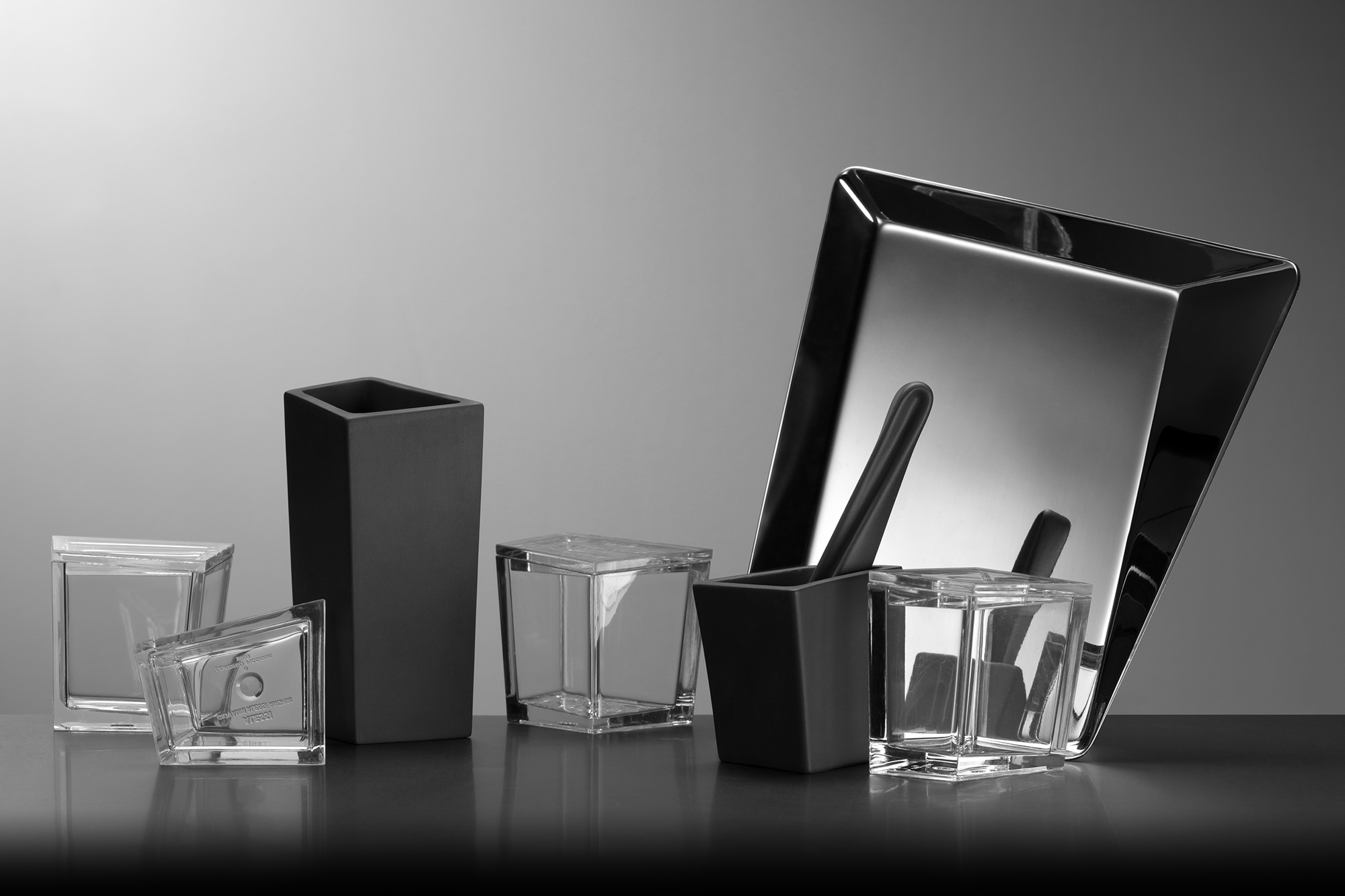A tray, four containers for salt, a tower for fragrant herbs, a mortar, and a pestle that also serves as a spoon. This project began in early 2008, when Fabio Fassone, accompanied by Lorenzo Piccione di Pianogrillo, met Alberto Alessi to tell him the history of salt. Cum Grano Salis found its space in the ALESSI catalogue due to its intention of exploring the central role that salt, and its uses, have in modern dining. Since every pinch of salt is different, Cum Grano Salis is a tribute to the world’s rich variety of salts, which can be selected according to one’s taste, the menu, or by following the chef’s recommendation.
STRATEGY When we asked ourselves what a modern salt cellar should do, we found it immediately obvious that “contain salt” was an obsolete concept to be overcome. It also seemed that the salt cellar, due to its shape and technique, was often one of the least attractive objects on the modern table. And yet, as many magnificent salt cellars remind us, table salt deserves great esteem, not only as a precious ingredient, but also for its many symbolic values. Each salt also has different grains: flakes, pyramidal crystals, cubes, concave and convex, hard or fragile, and we had to celebrate it through our work. Salt is a miracle of nature that is essential for life. Our idea was to create an object that would enhance the use of fine salts from different Salinas: a centrepiece that could be seen as a set for each table-companion even with the most demanding settings. Cum Grano Salis was designed to play a new role at the table. The mortar and pestle evoke ancient movements, tempting you to grind your fragrant mixture on a wave of inventiveness and the scent of the sea.
ART DIRECTION In order to share and explain the importance of salt across centuries and its role in modern dining, we crafted a special book and followed the overall artistic direction of the project. The book describes not only the different qualities of the salts we find on our tables today, but how those salts are produced, discovered; their intrinsic qualities and their history. Images are built specifically to highlight the core values of the overall project.








